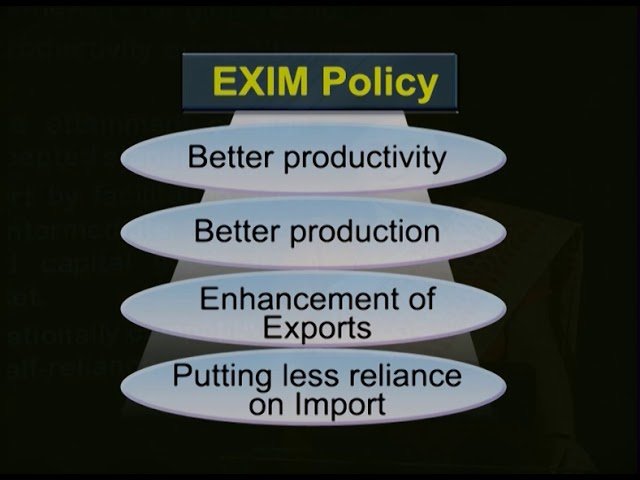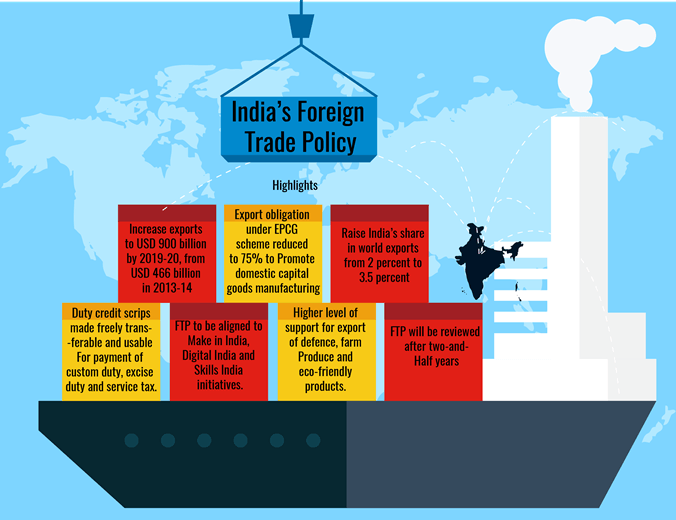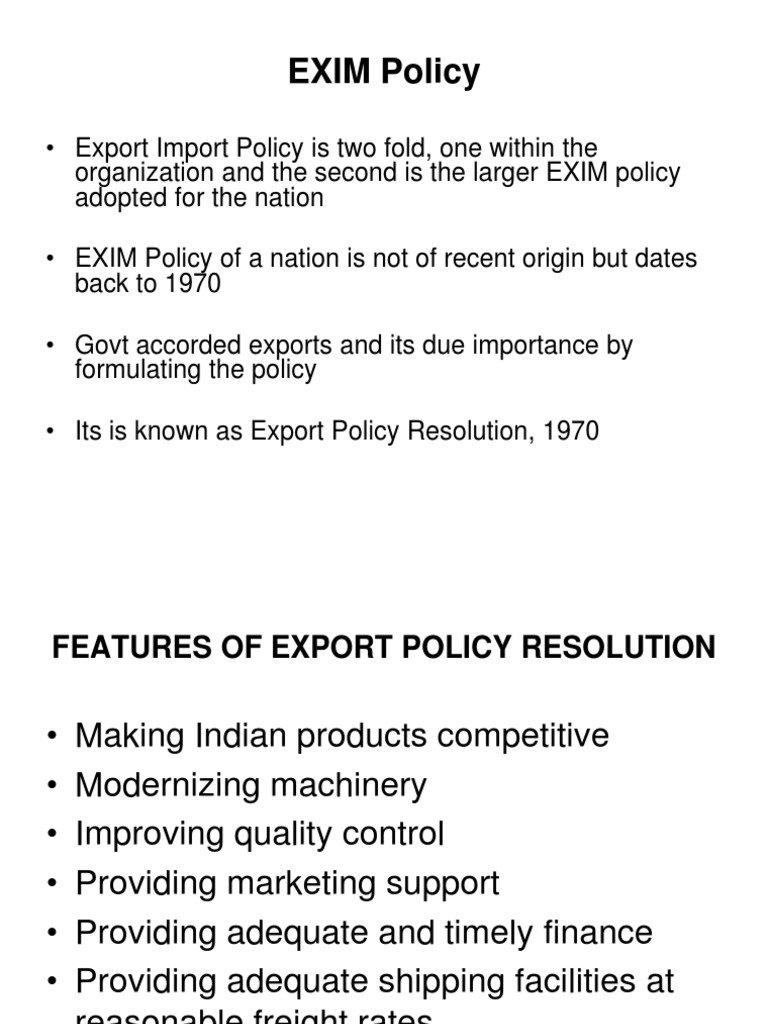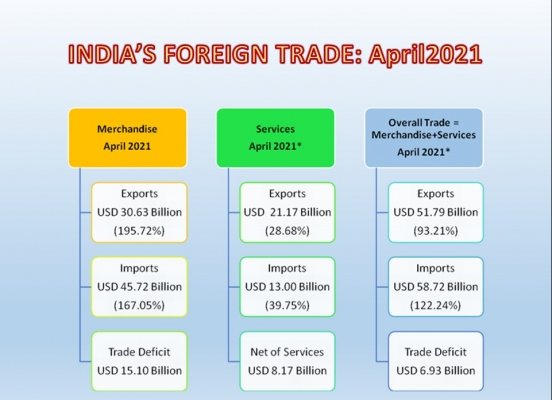Understanding the Direction of Trade in the Indian Economy
The vibrant tapestry of India’s economy is woven with threads of trade, shaping the nation’s destiny. As we set sail into the intricate waters of economic dynamics, it’s crucial to decipher the compass guiding the direction of trade in this diverse and dynamic country.
In the pre-Independence period, the direction of India’s foreign trade was determined not according to the comparative cost advantages of India but by the colonial relations between India and Britain.
In recent years, India has been charting a course towards greater global engagement. The once-insular economy is now casting its nets wider, fostering trade partnerships with nations across the globe. A paradigm shift is underway as India diversifies its trading portfolio, moving beyond traditional partners and embracing new markets.
One of the key drivers of this shift is the government’s strategic initiatives to boost exports. With a focus on ‘Make in India,’ there’s a concerted effort to enhance the competitiveness of domestic industries, encouraging them to spread their wings and explore international markets. This not only strengthens India’s economic standing but also cultivates a richer exchange of ideas, technologies, and cultures.
Furthermore, the digital revolution has propelled India into the global e-commerce arena. Small and medium enterprises (SMEs) are finding new avenues to connect with consumers worldwide, facilitating a more inclusive participation in international trade. E-commerce platforms have become bridges, linking Indian entrepreneurs with consumers and businesses around the world.
While traditional sectors like agriculture and textiles continue to play a significant role in India’s trade landscape, there’s a noticeable surge in the technology and services sector. The IT boom has made India a global hub for software and services, fostering a new era of economic collaboration.
Yet, challenges persist. Infrastructural bottlenecks, regulatory complexities, and geopolitical uncertainties create choppy waters that need navigating. Striking a balance between economic growth and sustainability is another compass point that must be carefully considered.
In conclusion, the direction of trade in the Indian economy is akin to a captivating journey, filled with promise and potential. As the nation charts its course, embracing innovation, fostering global partnerships, and addressing challenges head-on, the sails of India’s economy billow with the winds of progress, steering toward a horizon of prosperity.
Table of Contents
The Direction of Imports in India’s Economic Voyage
During the planning period as a whole, India has obtained maximum imports from USA, the reason being that India has imported large scale quantities of capital goods, intermediate products and foodgrains (under PL 480 agreement) from that country.
Ahoy, fellow economic enthusiasts! Today, let’s embark on a voyage across the seas of India’s trade landscape as we set our compass towards understanding the direction of imports in the thriving Indian economy.
Picture this: bustling ports, containers laden with goods, and a dynamic economy that relies on the seamless flow of imports to fuel its growth. India, with its diverse economic tapestry, is a fascinating case study when it comes to imports.

The Canvas of Imports: What and Why?
As we unfurl our sails, it’s essential to peek into the cargo hold and understand what India imports and why. A colorful array of goods makes its way into the country, ranging from electronic gadgets to crude oil, machinery to precious metals. But why does India rely on imports?
One word: specialization. The global economy is an intricate web of comparative advantages, and India, being a player on this global stage, engages in international trade to access goods more efficiently and cost-effectively. Imagine a potluck dinner where each friend brings their specialty – that’s international trade in action.
Navigating the Trade Routes: From Whence They Come
Now, let’s set our sights on the trade routes that connect India to the world. The major contributors to India’s imports are China, the United States, and the United Arab Emirates, each bringing its unique cargo. From electronic components to oil, these countries play a pivotal role in shaping India’s import landscape.
However, India isn’t just a passive receiver; it’s also a player in the global trade game. Indian businesses source raw materials and intermediate goods from various corners of the globe, transforming them into finished products that cater to both domestic and international markets. It’s a symbiotic relationship – a true win-win.
The Ebb and Flow: Changing Trends in Imports
As our economic ship sails through time, it encounters changing tides in import trends. The ‘Make in India’ initiative has spurred a push towards self-sufficiency, prompting a reevaluation of import policies. While essential goods like oil and machinery remain steadfast in the import mix, there’s a growing focus on reducing dependency on certain imports.
Strategies like diversification of import sources and fostering domestic production capabilities are becoming the wind in India’s sails. The nation is charting a course towards a more resilient and sustainable economic future, where imports complement, rather than dictate, the journey.
Challenges on the Horizon: Navigating Stormy Seas
No voyage is without its challenges, and the same holds true for India’s import landscape. Currency fluctuations, geopolitical tensions, and global supply chain disruptions create stormy seas that demand nimble navigation. The Indian economy, much like a skilled captain, must adapt to these challenges, ensuring a smooth sail through unpredictable waters.
Conclusion: Sailing Towards Economic Prosperity
As we drop anchor on our exploration of the direction of imports in the Indian economy, it’s clear that the nation is sailing towards economic prosperity on the global stage. Embracing the winds of change, India’s import policies are evolving, adapting to new realities while staying true to the spirit of international collaboration.
So, fellow economic sailors, let’s keep our eyes on the horizon, ready to navigate the trade winds and explore new shores of economic growth. The direction of imports in India is not just a tale of goods crossing borders; it’s a narrative of collaboration, resilience, and the boundless potential of a nation setting sail towards a brighter economic future.
In 2016-17, China occupied the first position in India’s imports ( share 16.0 per cent), followed by USA (5.8 per cent), UAE (5.6 per cent), Saudi Arabia (5.2 per cent), Switzerland (4.5 per cent), Indonesia (3.5 per cent), South Korea (3.3 per cent), Iraq (3.1 per cent), Germany (3.0 per cent) and Australia (2.9 per cent) in that order.
In financial year 2022-23, India’s top importing countries representing share of import in Indian economy, China occupied the first first position with 15.43 per cent, followed by UAE with 7.31 per cent, then USA with 7.07 per cent and followed by Saudi Arabia with 5.56 per cent.

The Direction of Indian Economy’s Exports
In the vast ocean of global trade, India has been charting its course with determination, steadily navigating the waves of economic progress. The direction of India’s exports plays a pivotal role in shaping the nation’s economic landscape, and understanding this journey provides a glimpse into the country’s growth and aspirations.
Over the years, India’s export dynamics have undergone significant shifts, reflecting the changing tides of global demand and the country’s evolving economic policies. Historically known for its diverse and rich exports, ranging from spices to textiles, India has transformed into a key player in the global market.
One of the noteworthy trends in recent years is the diversification of export sectors. While traditional sectors like textiles and apparel continue to contribute significantly, there’s a noticeable surge in technology and pharmaceutical exports. The IT industry, in particular, has emerged as a beacon of India’s prowess, with software services, IT outsourcing, and software products finding resonance in the international market.
Additionally, the pharmaceutical sector has not just been a provider of medicines but a global lifeline, especially during the challenging times of the COVID-19 pandemic. India’s capability to produce affordable and high-quality pharmaceuticals has not only bolstered its export numbers but has also underscored its role as the ‘Pharmacy of the World.’
The geographical direction of India’s exports has also witnessed strategic shifts. Traditionally inclined towards Western markets, there’s a noticeable pivot towards strengthening ties with neighboring countries and exploring markets in Africa and Southeast Asia. This eastward focus aligns with India’s “Act East” policy, fostering economic collaboration and trade partnerships with nations beyond the conventional Western allies.
Furthermore, the emphasis on sustainable and eco-friendly practices in recent years has permeated into India’s export strategies. The global community’s growing consciousness towards environmental impact has prompted Indian businesses to adopt green practices, making ‘Made in India’ synonymous with responsible and sustainable production.
While the export journey has been positive overall, challenges persist. Trade tensions, fluctuating currency values, and global economic uncertainties present hurdles that require adept navigation. The need for robust trade agreements, both bilateral and multilateral, becomes paramount to ensure a stable and secure environment for Indian exports to thrive.
The government’s role in shaping the direction of exports cannot be understated. Proactive policy measures, trade facilitation initiatives, and infrastructural developments play a crucial role in supporting businesses on their export ventures. Additionally, addressing bureaucratic red tape and streamlining processes can further enhance the competitiveness of Indian exports on the global stage.
In conclusion, the direction of India’s exports paints a dynamic picture of a nation embracing change and seizing opportunities. From the shores of traditional industries to the uncharted territories of technology and sustainability, India’s export trajectory reflects resilience, adaptability, and a commitment to global economic integration. As the nation continues to sail through the currents of international trade, the key lies in maintaining this momentum and steering towards a future where ‘Made in India’ stands as a symbol of quality, innovation, and inclusivity on the global stage.
In 2016-17, USA with a share of 15.3 per cent occupied the top position. It was followed by UAE (share 11.3 per cent), Hong Kong (5.1 per cent), China (3.7 per cent), Singapore (3.5 per cent), UK (3.1 per cent), Germany (2.6 per cent), Bangladesh (2.4 per cent), Belgium (2.0 per cent) and Nepal (1.94 per cent) in that order.
In financial year 2022-23, India’s top exporting countries representing the India’s foreign trade The USA, UAE, Netherlands, China , Bangladesh, Singapore, Brazil, UK, Saudi Arabia, Indonesia, Germany, and Hong Kong.
India’s Foreign Trade Evolution: A Journey Since 1991
Over the past few decades, India has witnessed a remarkable transformation in its foreign trade landscape, particularly since the economic reforms of 1991. The liberalization policies introduced at that time paved the way for a more open and globally integrated economy. Let’s delve into the growth and structural changes that have shaped India’s foreign trade since this pivotal moment in its economic history.

The Winds of Change In 1991:
The early 1990s marked a turning point for India’s economy. Faced with a severe balance of payments crisis, the Indian government, under the leadership of then-Finance Minister Dr. Manmohan Singh, initiated a series of economic reforms. The aim was to liberalize trade and reduce government intervention, fostering a more market-oriented approach.
Growth in Exports:
One of the most significant outcomes of these reforms was the substantial growth in India’s exports. The dismantling of trade barriers, simplification of export procedures, and exchange rate adjustments contributed to a surge in international trade. Industries like information technology, pharmaceuticals, and textiles seized the opportunity to expand their global footprint.
Information Technology Boom:
The late 20th century saw the emergence of India as an IT powerhouse. The outsourcing wave brought about a paradigm shift in the country’s foreign trade dynamics. IT services, including software development and business process outsourcing, became major contributors to export earnings. This shift not only elevated India’s global standing but also diversified the export basket.
Trade Partnerships and Agreements:
India actively sought to enhance its global trade relations through bilateral and multilateral agreements. Engagement with organizations like the World Trade Organization (WTO) and regional partnerships such as the Association of Southeast Asian Nations (ASEAN) bolstered India’s presence in international trade. These collaborations opened up new markets and facilitated a more seamless flow of goods and services.
Structural Changes:
The structural composition of India’s foreign trade underwent a significant transformation. While traditional sectors like agriculture and textiles continued to play a role, there was a noticeable shift towards high-value-added industries. The services sector, particularly IT and software services, began to dominate the export landscape.
Export and Import in the Planning Period

Challenges and Opportunities:
Despite the positive strides, India faced challenges in maintaining a favorable balance of trade. Fluctuations in global commodity prices, geopolitical tensions, and occasional protectionist measures by trading partners posed hurdles. However, these challenges also spurred India to diversify its export basket and explore new markets, mitigating risks associated with dependence on a few sectors.
Rise of E-commerce:
In recent years, the advent of e-commerce has added a new dimension to India’s foreign trade. The ease of online transactions has facilitated small and medium enterprises’ (SMEs) entry into the global market. Platforms connecting buyers and sellers across borders have become instrumental in promoting ‘Made in India’ products worldwide.
Sustainable Trade Practices:
As global awareness of environmental and social issues grew, so did the emphasis on sustainable trade practices. India recognized the importance of integrating sustainability into its foreign trade strategies. Initiatives promoting eco-friendly manufacturing, fair trade practices, and adherence to international standards have not only enhanced India’s reputation but also positioned it as a responsible player in the global trade arena.
Conclusion:
The growth and structural changes in India’s foreign trade since 1991 underscore the nation’s journey towards becoming a major player in the global economic landscape. From the IT revolution to the rise of e-commerce, each milestone reflects the adaptability and resilience of India’s economy. As the country continues to navigate the complexities of the international trade arena, it is poised to capitalize on emerging opportunities and address challenges with strategic foresight. The evolution of India’s foreign trade is not just a historical account but a testament to the nation’s commitment to embracing a dynamic and interconnected global economy.